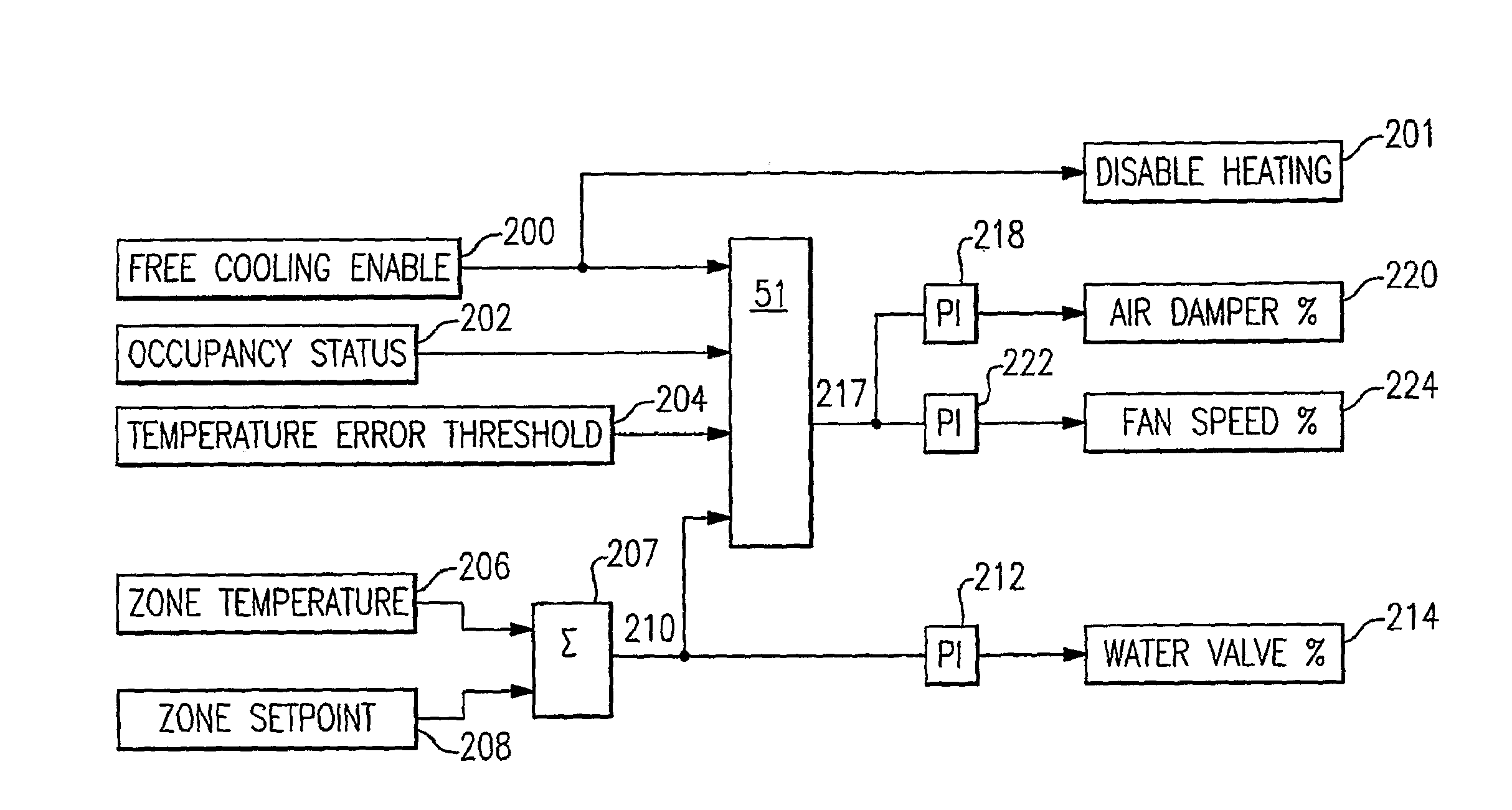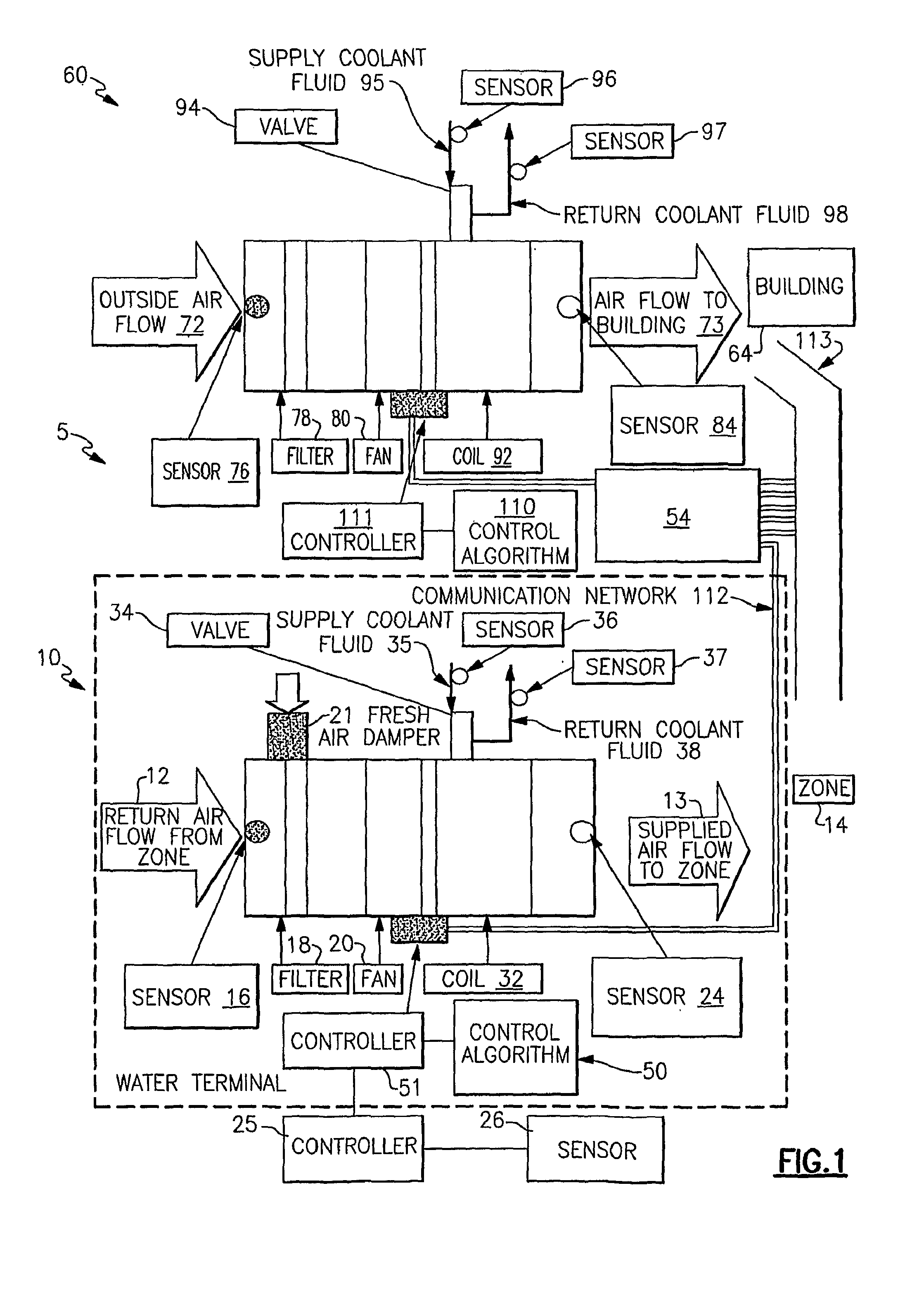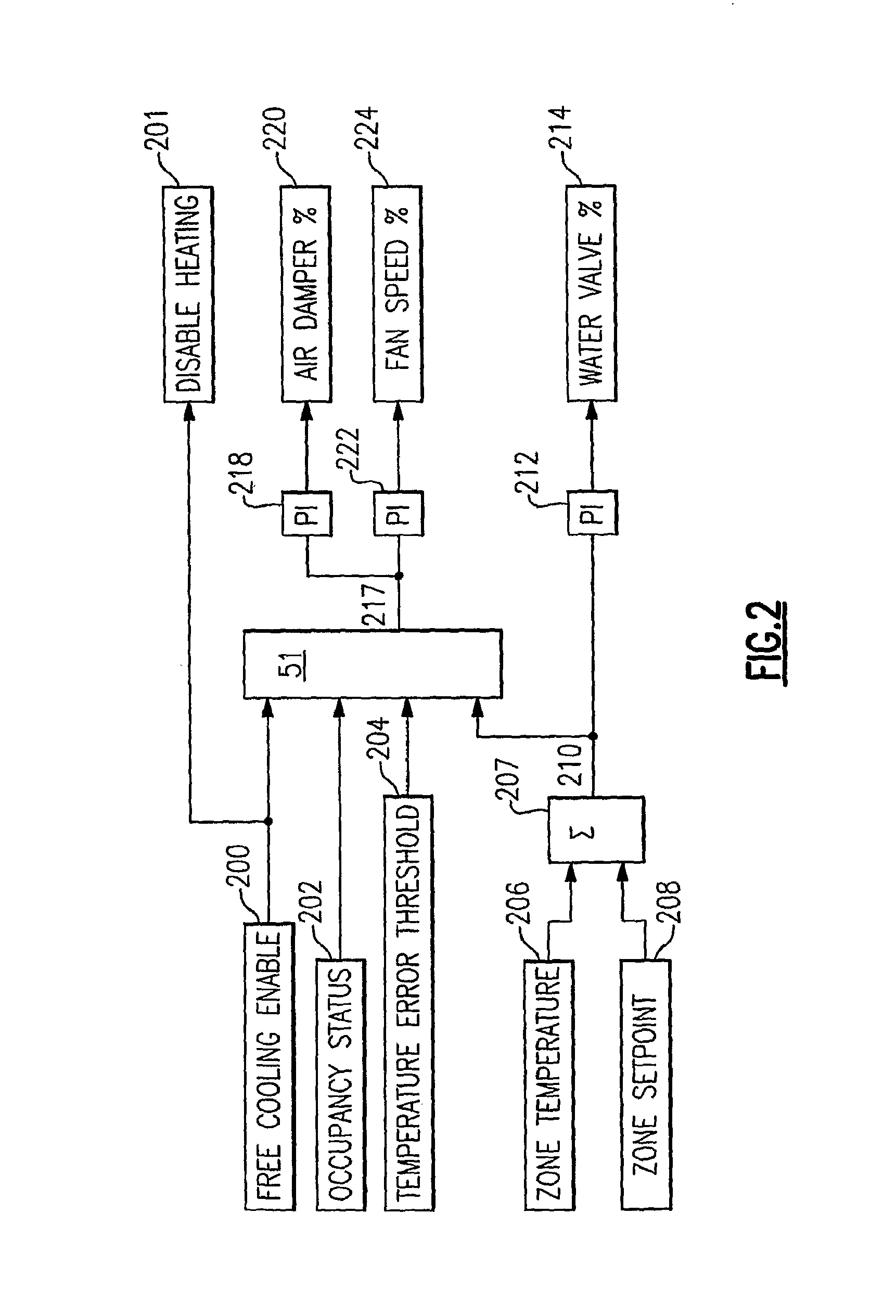Air-conditioning algorithm for water terminal free cooling
- Summary
- Abstract
- Description
- Claims
- Application Information
AI Technical Summary
Benefits of technology
Problems solved by technology
Method used
Image
Examples
Embodiment Construction
[0022]Referring initially to FIG. 1, there is illustrated a diagrammatical depiction of a building air-conditioning system generally referenced at 5, for conditioning the air of a building 64, wherein the air handling unit generally referenced at 60, the exemplary water terminal generally referenced at 10, equipped with a fresh air damper 21, the building air-conditioning system communication network 112, and the building fresh air duct network 113, comprise the major components of the system.
[0023]The air handling unit 60, is illustrated with a direction of outside air flow 72, coming into it from outdoors, and a direction of air exiting the air handling unit 60, as air flow 73, to the building 64. Outside air flow 72, entering the air handling unit 60, passes over an outside air temperature sensor 76, then through an air handling unit filter 78, at least one air handling unit fan 80, an air handling unit temperature adjusting coil 92, and finally over an air handling unit supply a...
PUM
 Login to View More
Login to View More Abstract
Description
Claims
Application Information
 Login to View More
Login to View More - R&D Engineer
- R&D Manager
- IP Professional
- Industry Leading Data Capabilities
- Powerful AI technology
- Patent DNA Extraction
Browse by: Latest US Patents, China's latest patents, Technical Efficacy Thesaurus, Application Domain, Technology Topic, Popular Technical Reports.
© 2024 PatSnap. All rights reserved.Legal|Privacy policy|Modern Slavery Act Transparency Statement|Sitemap|About US| Contact US: help@patsnap.com










